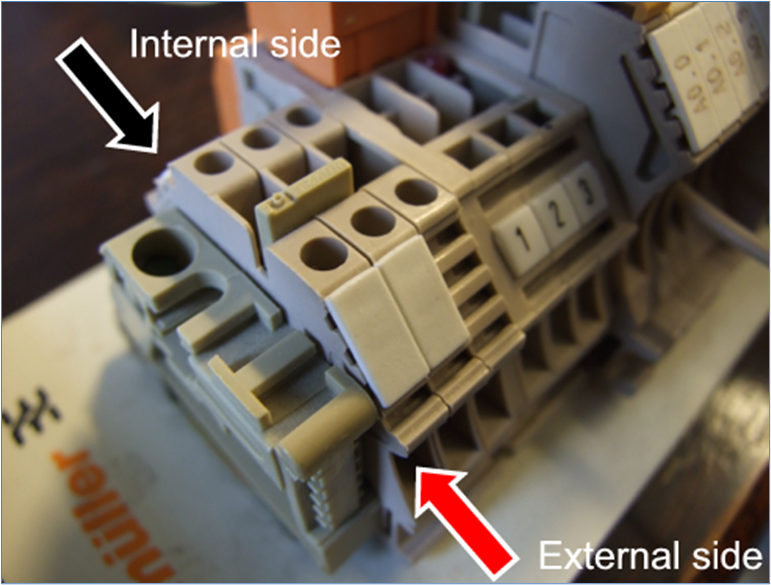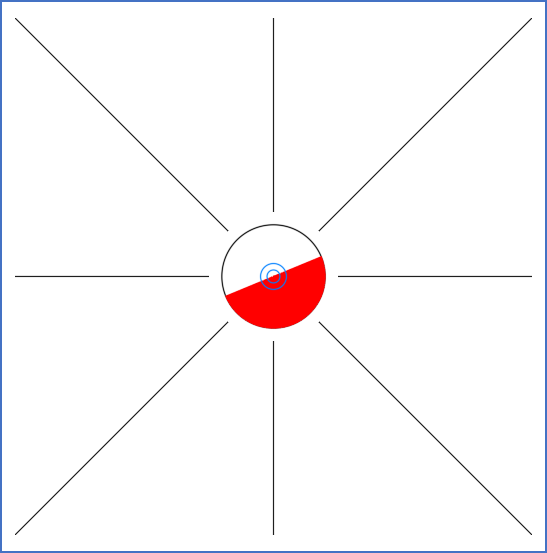|
<< Click to Display Table of Contents >> Internal and external terminal sides |
  
|
|
<< Click to Display Table of Contents >> Internal and external terminal sides |
  
|
Physical terminals in most cases have two sides.

Figure 1439: External and internal side of physical terminals
It is common to have external cables connected to one side of the terminal, and internal wires to the other. For this reason, we have chosen the terms “internal side” and “external side” for the two sides of terminals. Even if there are not always external cables on one side and internal wires on the other, terminals still have two sides, and those sides must be called something, to be able to distinguish them from one another. Sometimes, it is extremely important to do that.
So, the terminal sides are called “internal” and “external”, even when cables are connected to both sides as in cross connections, and in cases where internal wires are connected to both sides.
Distinguishing between the two sides of terminals in this way is important for terminal lists, and sometimes also for wire lists. In a conventional terminal list, internal connections are presented to the left, and external connections to the right.
A special technique is used to define whether a connection to a terminal is internal or external. The external side is simply marked with red colour.

Figure 1440: The ”piece of cake” marking of external
terminal side.
As you will see, it is possible to control four directions separately. You can draw lines from a terminal in at least four directions: up, down, left, and right.
It is in fact possible to draw lines in 45-degree angles as well, which make up a total of eight directions, as shown in the figure above.
The IEC standard however, with few exceptions only permits lines in two opposite directions at a time. Despite that, lines are sometimes drawn in more than those two directions. Some cases with links are permitted by the IEC standard. Other cases constitute standard violations, but they nevertheless occur, and must therefore be handled, which cadett ELSA does.
cadett ELSA supports controlling lines separately in the four directions, each one of them being defined as either internal or external. The “pieces of cake”, which are shown in the figure above, are turned 22.5 degrees to make all eight directions unambiguous. A border between two pieces of cake at a 45-degree angle would make a line in that direction ambiguous.